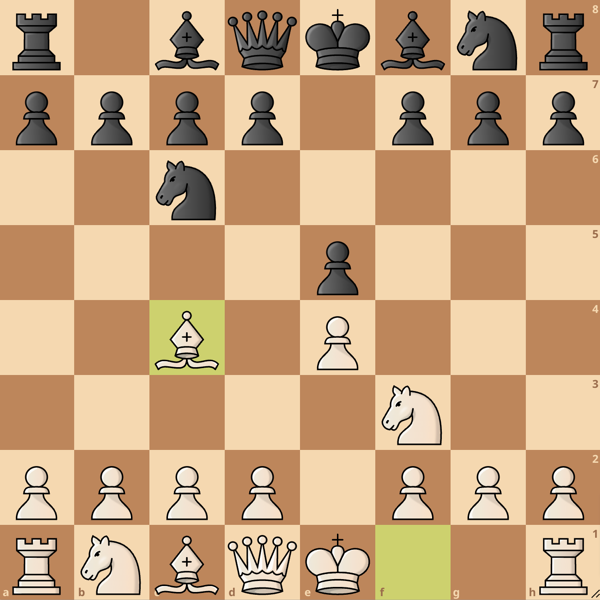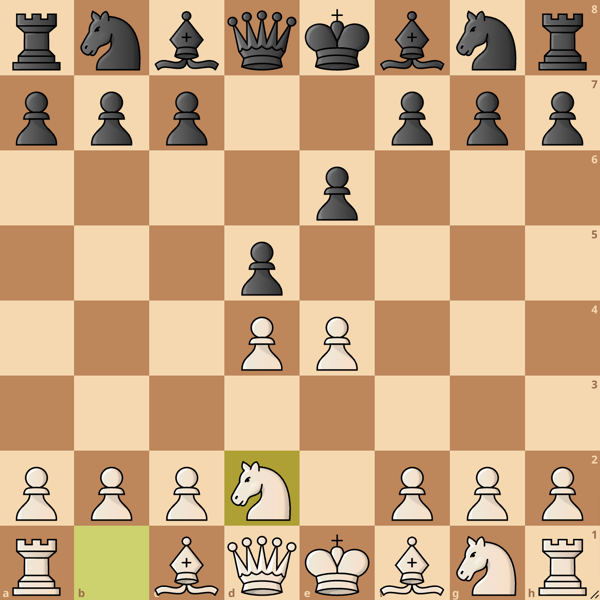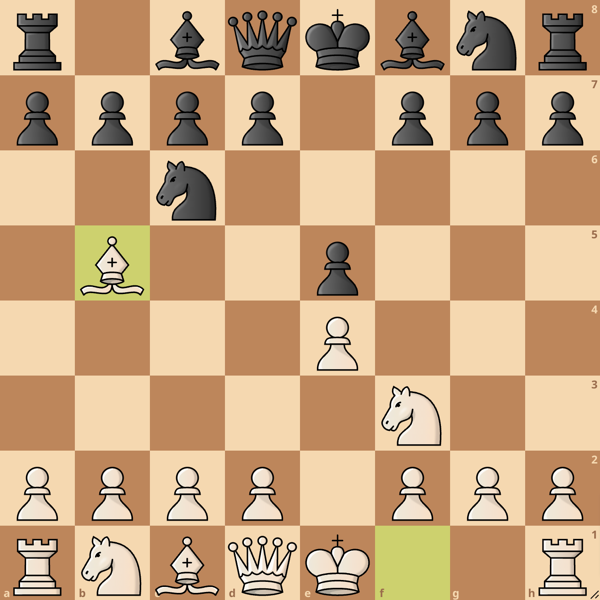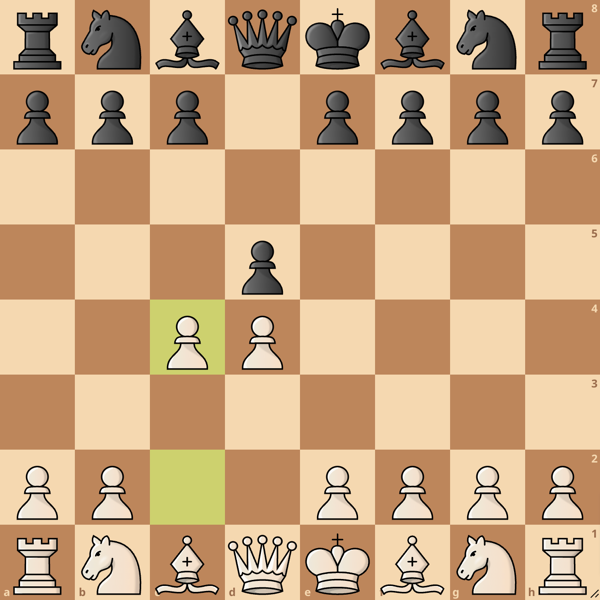Although 20% of your study focus should be placed on openings, we must pay attention to their importance because they are the foundation of a game. As a beginner, openings make the game easier because once you gain a slight advantage from the opening, the latter stages of the game will be more straightforward.
Italian Game
The Italian Game is an e4 opening characterized by the moves 1.e4 e5 2. Nf3 Nc6 3. Bc4. It is a simple-looking opening that amateur players can play by intuition because it follows the opening principles they learn. The pawns hop to the center for control, the knights swing to support the control of the center, and the c4 bishop develops early to control the center and prepare for a kingside attack.

The Giuoco Piano (3…Bc5) usually follows in a mirroring set of moves. The kingside pieces deployed within three moves indicate that castling will soon follow. Therefore, the Italian game embodies a high natural flow in play.
If White is ambitious, they can continue with the Evans Gambit (4.b4) from this point and transition to a more aggressive game phase. Otherwise, the natural flow continues with slow developments and subsequent exchange of pieces.
Sicilian Defense
Like every other “Defense” opening setup in chess, the Sicilian Defense is characterized by Black’s c5 response to 1.e4. Both colors need to learn the most popular lines of the Sicilian Defense because the frequency of this opening’s occurrence in top-level chess has popularized the opening.
The most popular variations are the Classical Variation, Najdorf Variation, and Dragon Variation. But don’t be caught off guard because the Smith-Morra Gambit and the Grand Prix Attack are also offshoots of the Sicilian Defense. As a beginner, Chessable’s Shaun Sedice explains how we can choose the best variation of the Sicilian Defense suitable to our taste.
The only significant disadvantage of playing the Sicilian is its vast theoretical lines. But if you’re willing to put in the work to study this famous opening, then you can expect to increase your success rate in games significantly.
French Defense
The French Defense is characterized by 1.e4 e6, where Black appears to opt for a timid approach, but on the contrary, 1…e6 is meant to serve as a defensive cover for an impending 2…d5. The usual lines are 1.e4 e6 2. d4 d5, so from this position, we can conclude that the French Defense is an e4 opening with the soul of a d4 opening because, in many cases, we see an exchange on d5.
According to Chess.com, it is easy to learn and has sharp counterattacking possibilities. The only significant downside is that it can become passive and boring. Note that if you are going for the French Defense as Black, you should avoid the Tarrasch variation (1.e4 e6 2.d4 d5 3.Nd2) because there is only a 28% chance of winning the game, if you’re good enough.

Variations like the Winawer Variation (1.e4 e6 2.d4 d5 3.Nc3 Bb4) are considered tricky and can offer the best chances of a Black win.
Ruy Lopez
The Ruy Lopez, also called the Spanish Opening (1.e4 e5 2.Nf3 Nc6 3. Bb4), is as popular as the Italian Opening because of its natural-flowing opening sequence of moves. The only difference from the Italian Opening is the urge to attack Black’s c6 Knight protecting the e5-pawn. Due to the more aggressive nature of the Ruy Lopez opening, it has a plethora of lines that often catch amateur players off guard.

So, while the Ruy Lopez is highly effective for both sides, you might want to carefully consider playing it if you’re too lazy to study and master lines. Also, due to its ample avenue for opportunities on both ends, a draw is more likely to be the case in Ruy Lopez, considering it is played in top-level chess games.
For example, the Berlin Defense (3…Nf6) is 44% likely to end a draw with a win for White hovering around 33%, according to the statistics of games played on Chess.com.
Queen’s Gambit
It is firmly recommendable for beginners, one of the oldest chess openings, and arguably the most effective gambit in chess. Its motives are easy to understand, and it comes with traps, most of which are explained in-depth on chessdoctrine.com.

A player who opts for the Queen’s Gambit hits the jackpot when accepted, and the opponent tries to maintain their numerical pawn advantage. This show of greed enables White to stretch Black’s defense, creating channels for swift, irrefutable attacks.
Final Thoughts
While it is practically impossible to cram all lines of every opening, beginners are advised to pick openings based on effectiveness and affinity and only partially on how fun they seem. Then, having a good understanding of opening principles will guide you through unfamiliar opening repertoire.

